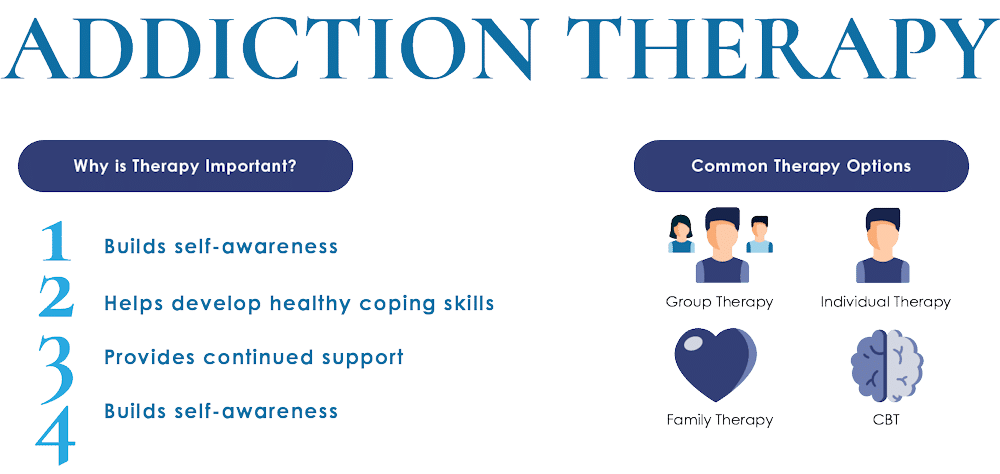
Why Choosing the Right Inpatient Rehabilitation Program Matters
An inpatient rehabilitation program is a live-in treatment facility providing 24/7 medical care and intensive therapy (3+ hours daily) to help you recover from a serious injury, illness, or substance use disorder. These programs are designed for individuals who need structured, round-the-clock support to regain function and independence, such as those recovering from a stroke, major surgery, or severe addiction.
The decision can feel overwhelming, but the right program significantly improves recovery outcomes. At Addiction Helpline America, we specialize in connecting people with the right level of care for substance use and co-occurring disorders. We understand that the right fit can be the difference between recovery and relapse.
This guide breaks down five practical ways to solve your inpatient rehab dilemma—from understanding who needs this level of care to navigating costs and choosing a quality program.

Simple guide to inpatient rehabilitation program terms:
Way 1: Clarify Who Needs a Program and Why
Before choosing an inpatient rehabilitation program, determine if this intensive level of care is right for you. Inpatient rehab provides 24/7 medical supervision in a structured environment, designed for those who are medically stable but need comprehensive support to regain function and independence. If you’re unsure about addiction signs, see our guide on signs and symptoms.
What is Inpatient Rehabilitation and Who is it For?
An inpatient rehabilitation program involves living at a facility to receive round-the-clock care and daily therapy. This residential model removes daily life obstacles and triggers. It’s particularly beneficial for:
- Individuals recovering from surgery or major injuries like hip replacements or severe burns
- Stroke patients needing specialized neurological care
- Brain and spinal cord injury survivors requiring comprehensive therapy
- Those with severe substance use disorder, especially with co-occurring mental health issues. Learn more about Inpatient vs Outpatient Rehab
Conditions That Typically Require Inpatient Care

Key conditions include:
- Neurologic: Stroke, TBI, spinal cord injuries, multiple sclerosis
- Orthopedic: Major fractures, joint replacements, amputations, burns
- Cardiovascular: Post-heart attack or cardiac surgery recovery
- Severe Addiction with Co-occurring Disorders: Our Rehabs for Depression Guide 2025 explores integrated approaches
The Primary Goals of Rehabilitation
The ultimate goal is achieving the highest possible independence and quality of life through:
- Restoring function: Relearning essential skills
- Preventing complications: Medical oversight avoids secondary issues
- Achieving independence: Focusing on daily living activities
- Safe community reintegration: Preparing for life outside the facility
- Developing coping skills: For addiction, learning relapse prevention. Educate Myself on addiction for more information
Way 2: Understand the Daily Process and Support System
An inpatient rehabilitation program provides structured healing through intensive therapy and professional support.
Services and Therapies Offered
You’ll typically receive at least 3 hours of therapy daily, 5-7 days per week:
- Physical Therapy (PT): Rebuilds strength, balance, mobility
- Occupational Therapy (OT): Focuses on daily living skills
- Speech-Language Pathology (SLP): Addresses communication and swallowing
- Behavioral Therapies: CBT and DBT for substance use disorders
- Medication-Assisted Treatment (MAT): Manages withdrawal and cravings
- Family Therapy and Peer Support: Including 12-Step Programs
The Role of the Rehabilitation Team

Your interdisciplinary team includes:
- Rehabilitation Physicians: Lead medical care
- Rehabilitation Nurses: Provide 24/7 care
- Therapists: Guide daily rehabilitation
- Social Workers: Coordinate discharge planning
- Family Members: Key team members whose involvement improves outcomes. See getting treatment for a loved one
What to Expect During Your Stay
- Length: 12-14 days average for medical rehab; 30-90 days for substance use
- Schedule: Structured therapy sessions, meals, and rest
- What to Bring: Comfortable clothes, non-slip shoes, toiletries, medication list
- Leave at Home: Valuables, cash, non-essential electronics
- Your Role: Active participation is essential for success
Call Now – Your Journey to Recovery Begins Today!

Take the first step towards a healthier life! Call now to connect with our compassionate team and start your recovery journey today. Your path to healing awaits!
Our recovery specialists are available 24/7 to provide support, and all calls are confidential and free. Reach out anytime – we’re here to help!
Way 3: Master the Admission and Eligibility Steps
Understanding the admission process for an inpatient rehabilitation program makes it more manageable.
The Admission Process

Typical steps:
- Referral: From doctor, hospital, or self-referral for substance use
- Initial Assessment: Review of medical records and condition
- Insurance Verification: Confirming coverage and costs
- Physician Evaluation: Confirming eligibility for intensive care
- Admission Decision: Scheduling admission date
Our Ultimate Guide to Finding a Rehab helps steer this process. Search for treatment facilities here.
Key Eligibility Criteria
To qualify, you must:
- Be medically stable for therapy participation
- Tolerate 3+ hours of intensive therapy daily
- Have significant functional deficits requiring multidisciplinary care
- Show potential for improvement
- Require regular physician intervention
- Have a community discharge plan
For substance use, see our Detox Program Near Me Guide.
Understanding Levels of Care
- Acute Inpatient Rehabilitation: Most intensive, 3+ hours therapy daily in hospital setting
- Subacute Rehabilitation: Less intensive, 1-2 hours daily in skilled nursing facility
- Residential Treatment: Non-hospital setting for substance use disorders with 24/7 structure
Way 1: Clarify Who Needs a Program and Why
Deciding on an inpatient rehabilitation program starts with understanding if it’s the right fit. These programs offer a highly structured, 24/7 supervised environment designed for intensive recovery from serious medical events, injuries, or substance use disorders. It’s a significant commitment, but for many, it’s the most effective path to regaining independence. For help identifying addiction, see our guide on signs and symptoms.
What is Inpatient Rehabilitation and Who is it For?
Inpatient rehab means you live at the treatment facility, allowing you to focus completely on healing without daily distractions. This level of care is ideal for individuals who are medically stable but need significant support. This includes patients recovering from:
- Stroke, traumatic brain injury (TBI), or spinal cord injury
- Major surgeries (e.g., joint replacement) or severe burns
- Severe drug or alcohol addiction, especially with co-occurring mental health disorders
To compare this with other options, see our guide on Inpatient vs Outpatient Rehab.
Conditions That Typically Require Inpatient Care
Inpatient programs are equipped to handle complex conditions requiring a coordinated team of specialists. Common examples include:
- Neurologic Conditions: Stroke, TBI, spinal cord injuries, multiple sclerosis.
- Orthopedic & Traumatic Injuries: Major fractures, amputations, severe burns.
- Cardiovascular Events: Post-heart attack or cardiac surgery recovery.
- Severe Addiction: Especially when combined with mental health issues like depression. Our Rehabs for Depression Guide 2025 explains integrated treatment.
The Primary Goals of Rehabilitation
The core mission is to help you achieve the highest possible level of function and independence. Key goals include:
- Restoring physical and cognitive function.
- Improving overall quality of life.
- Preventing medical complications.
- Achieving independence in daily activities.
- Ensuring a safe return to the community.
- Developing coping skills for long-term sobriety. Learn more by visiting Educate Myself on addiction.
Way 2: Understand the Daily Process and Support System
When you step into an inpatient rehabilitation program, you’re entering a world built around one central goal: your recovery. Understanding what your days will look like—and who will be walking alongside you—can transform anxiety into confidence.
Call Now – Your Journey to Recovery Begins Today!

Take the first step towards a healthier life! Call now to connect with our compassionate team and start your recovery journey today. Your path to healing awaits!
Our recovery specialists are available 24/7 to provide support, and all calls are confidential and free. Reach out anytime – we’re here to help!
Services and Therapies Offered in an Inpatient Rehabilitation Program
The heart of any inpatient rehabilitation program is its therapy. This isn’t a casual once-a-week session. We’re talking about intensive, focused work—typically at least 3 hours of therapy daily, 5 to 7 days a week. It’s demanding, yes, but it’s also where the real healing happens.
- Physical Therapy (PT): To improve strength, balance, and mobility.
- Occupational Therapy (OT): To relearn daily living activities (ADLs) like dressing and cooking.
- Speech-Language Pathology (SLP): To address speech, cognitive, or swallowing issues.
- Behavioral Therapies (CBT, DBT): For addiction treatment, these therapies help change negative thought patterns and build coping skills.
- Medication-Assisted Treatment (MAT): Uses medications to manage cravings and withdrawal in substance use recovery.
- Family Therapy and Peer Support: Involving loved ones and connecting with groups like 12-Step Programs are crucial for long-term success.
The Role of the Rehabilitation Team and Family
You are not alone in this journey. An inpatient rehabilitation program surrounds you with an interdisciplinary team that works together on your care plan. This team includes physiatrists (rehab doctors), nurses, physical, occupational, and speech therapists, social workers, and nutritionists. Your family is also a vital part of the team; their involvement is strongly encouraged and proven to improve outcomes. For guidance on supporting a family member, see our resource on getting treatment for a loved one.
What to Expect During Your Stay
Structure is the name of the game. Your schedule will be full, purposeful, and at times exhausting—but that intensity is what drives results.
- Length of Stay: Averages 12-14 days for medical rehab; 30-90 days for substance use treatment.
- Daily Routine: Expect a full schedule of therapy sessions, meals, and rest. Your day might include individual therapy, group sessions, educational classes, and recreational activities.
- What to Pack: Comfortable clothing, non-slip shoes, toiletries, and a list of your medications.
- What to Leave at Home: Valuables and most electronics. Cell phone use is often limited to minimize distractions.
- Your Responsibility: Your active participation is essential for success. Engage in therapy, communicate with your team, and focus on your goals.
Way 3: Master the Admission and Eligibility Steps
Navigating the admission process for an inpatient rehabilitation program can feel daunting, but understanding the steps and eligibility criteria will make it much smoother. We’re here to help you through it.
The Admission Process for an Inpatient Rehabilitation Program
Here’s a typical admission process:
- Referral: This often comes from a hospital physician or social worker. For substance use treatment, you can also self-refer.
- Initial Assessment: The facility’s team conducts a pre-admission screening to review your medical history, current condition, and therapy needs.
- Insurance Verification: The facility will verify your insurance coverage and explain any out-of-pocket costs.
- Physician Evaluation: A rehabilitation physician will evaluate you to confirm you meet the criteria for intensive inpatient care.
- Admission Decision: Once approved, an admission date is scheduled.
Our Ultimate Guide to Finding a Rehab can walk you through the process, and you can also use our resources to search for treatment facilities here.
Key Eligibility Criteria for Admission
Eligibility for an inpatient rehabilitation program is designed for individuals who can benefit most from intensive care. Common requirements include:
- Medical Stability: You must be stable enough to participate in therapy.
- Ability to Participate in Intensive Therapy: You must be able to tolerate at least 3 hours of therapy per day.
- Significant Functional Deficits: You need help from multiple types of therapists.
- Potential for Improvement: A physician must determine that you can make significant functional gains.
- Physician Intervention Required: You need ongoing medical management from a doctor.
For those seeking help for substance use, eligibility also includes needing a supervised environment for detox. Our Detox Program Near Me Guide provides valuable insights.
Understanding Levels of Care in Rehabilitation
Rehabilitation isn’t one-size-fits-all. Different levels of care suit different needs. Understanding these is key to choosing the right inpatient rehabilitation program.
| Level of Care | Intensity of Therapy | Level of Medical Supervision | Typical Facility Type | Best For |
|---|---|---|---|---|
| Acute Inpatient Rehabilitation | 3+ hours/day, 5–7 days/week | Daily physician oversight; 24/7 nursing | Hospital-based inpatient rehab unit | Severe conditions (stroke, TBI, SCI), complex post-surgical needs, or medically complex cases needing intensive therapy |
| Subacute Rehabilitation | About 1–2 hours/day, 5–6 days/week | Regular nursing; periodic physician oversight | Skilled nursing facility or transitional care unit | Patients who can’t yet tolerate acute intensity or need step-down care after hospitalization |
| Residential Treatment | Daily clinical groups and individual therapy; structured schedule | 24/7 staff support; medical services available as needed | Non-hospital residential program | Substance use disorders requiring a safe, structured setting with therapy and support |
| Long-Term Residential Treatment | Extended programming and support (6–12 months) | 24/7 staff support | Therapeutic community | Severe addiction or multiple relapses; those needing a full life-rebuild and stable environment |
Way 4: Explain Costs and Insurance Coverage
The financial side of an inpatient rehabilitation program can feel overwhelming, but help is more accessible than you think.

Costs Associated with Inpatient Rehabilitation
For medical rehabilitation, a 30-day program typically costs $10,000-$25,000. Substance use treatment runs $300-$800 per day (about $10,000-$25,000 for 30 days). Detox adds $250-$1,000 per day.
Costs include:
- Program fees for rehabilitation services
- Room and board
- Medications
- Therapy charges (PT, OT, speech, counseling)
- Ancillary services (nursing, psychological support, recreation)
Always request a detailed cost breakdown before committing.
What Insurance Typically Covers
Thanks to the ACA and Mental Health Parity Act, addiction treatment must be covered like other medical conditions.
Private insurance typically covers medically necessary inpatient rehabilitation. Call your insurer to verify specific benefits.
Medicare covers inpatient rehabilitation through:
- Part A: Facility stay, therapy, room, meals, nursing, medications
- Part B: Doctor services
Cost structure:
- Days 1-60: $0 after Part A deductible ($1,676 in 2024)
- Days 61-90: $419/day
- Lifetime reserve days: $838/day
Learn more at Medicare coverage for inpatient rehabilitation care.
Medicaid covers rehabilitation for low-income individuals. Benefits vary by state.
No insurance? Options include payment plans, sliding scale fees, grants, and self-pay.
Addiction Helpline America helps you understand benefits and connect with facilities accepting your insurance. Our Addiction and Rehab Hotlines offer confidential guidance.
Way 5: Select a Quality Program and Plan for Aftercare
Choosing the right inpatient rehabilitation program is a critical decision. It’s about finding a center that provides high-quality care and prepares you for long-term success after you leave.
How to Choose a Quality Inpatient Rehabilitation Program
When you’re searching for an inpatient rehabilitation program, look for these signs of quality:
- Accreditation: Check for accreditation from bodies like The Joint Commission or the Commission on Accreditation of Rehabilitation Facilities (CARF). This is a key indicator of quality and safety.
- Qualified Staff: The team should consist of experienced, credentialed professionals, including physicians, nurses, and therapists.
- Specialization: Some facilities specialize in specific areas like stroke recovery, brain injury, or co-occurring disorders. Finding one that matches your needs can make a significant difference.
- Patient-to-Staff Ratio: A lower ratio often means more personalized attention.
- Evidence-Based Treatment: The program should use therapies proven by scientific research to be effective.
For more tips, see our guide on how to find a good rehab center.
Measuring Success and What Happens After Discharge
A quality inpatient rehabilitation program measures success by its patient outcomes and provides robust aftercare planning.
- Success Metrics: Look for high return-to-home rates, measurable functional improvement, and positive patient satisfaction scores. For addiction, high program completion rates are a strong indicator of effectiveness.
- Aftercare Planning: Your journey doesn’t end at discharge. The team should create a comprehensive aftercare plan with you before you leave. This plan may include:
- Outpatient therapy (PT, OT, counseling)
- Support groups like AA or NA
- Sober living arrangements
- Home care services
- Follow-up medical appointments
At Addiction Helpline America, we can help you find programs that meet these quality standards and feel right for you. Recovery is possible, and having the right support system makes all the difference.
Call Now – Your Journey to Recovery Begins Today!

Take the first step towards a healthier life! Call now to connect with our compassionate team and start your recovery journey today. Your path to healing awaits!
Our recovery specialists are available 24/7 to provide support, and all calls are confidential and free. Reach out anytime – we’re here to help!
Frequently Asked Questions about Inpatient Rehabilitation
How long is a typical stay in an inpatient rehabilitation program?
For medical rehabilitation, the average stay is 12-14 days. For substance use treatment, programs typically last 30, 60, or 90 days, as longer stays improve outcomes. Your care team determines the appropriate duration based on your needs.
What is the main difference between different levels of inpatient rehabilitation care?
The key differences are intensity of therapy and medical supervision:
- Acute Inpatient Rehab: 3+ hours of therapy daily with close physician oversight
- Subacute Rehab: Fewer therapy hours in a skilled nursing facility
- Residential Treatment: Structured therapy for substance use in non-hospital setting
Addiction Helpline America can help you understand your options.
What should I bring with me to inpatient rehab?
Essentials include:
- Week’s worth of comfortable clothing
- Non-slip shoes
- Personal toiletries
- Medication list
- Medical devices (glasses, hearing aids)
Leave valuables and most electronics at home. Check with your facility for specific guidelines. Addiction Helpline America can help you prepare.
Conclusion
Choosing an inpatient rehabilitation program is a significant step, but you now have the knowledge to make an informed decision. You understand who these programs are for, what the process entails, how to assess quality, and how to manage costs.
Recovery is not just possible—it’s happening every day for people healing from injuries, illnesses, and addiction. The right program provides the structured support needed to rebuild your life and improve your long-term outcomes.
At Addiction Helpline America, we are committed to ensuring no one steers this journey alone. We offer free, confidential guidance to connect you with the right treatment center from our nationwide network. Our team is ready to help you find a program that fits your unique needs, whether you’re in California, Florida, New York, New Jersey, Ohio, or anywhere else in the country.
Don’t wait to start your path to healing. Find the right treatment program for you and take the next step toward a healthier, more independent future. We are here to help.
Our helpline is 100%
free & confidential
If you or someone you care about is struggling with drug or alcohol addiction, we can help you explore your recovery options. Don’t face this challenge alone—seek support from us.
Programs
Resources
Will my insurance
cover addiction
treatment?
We're ready to help
Find the best
drug or alcohol treatment
center
Are you or a loved one struggling with addiction? Call today to speak to a treatment expert.
















